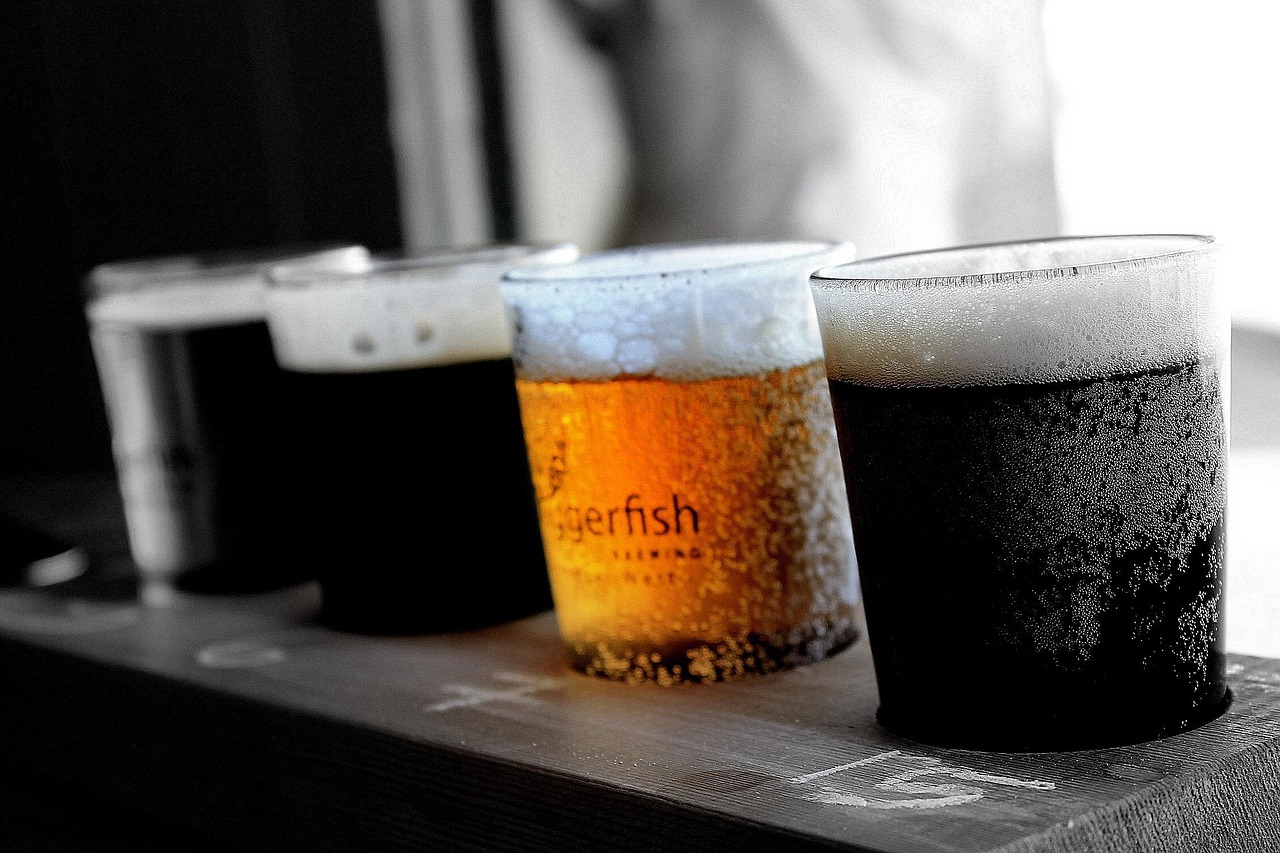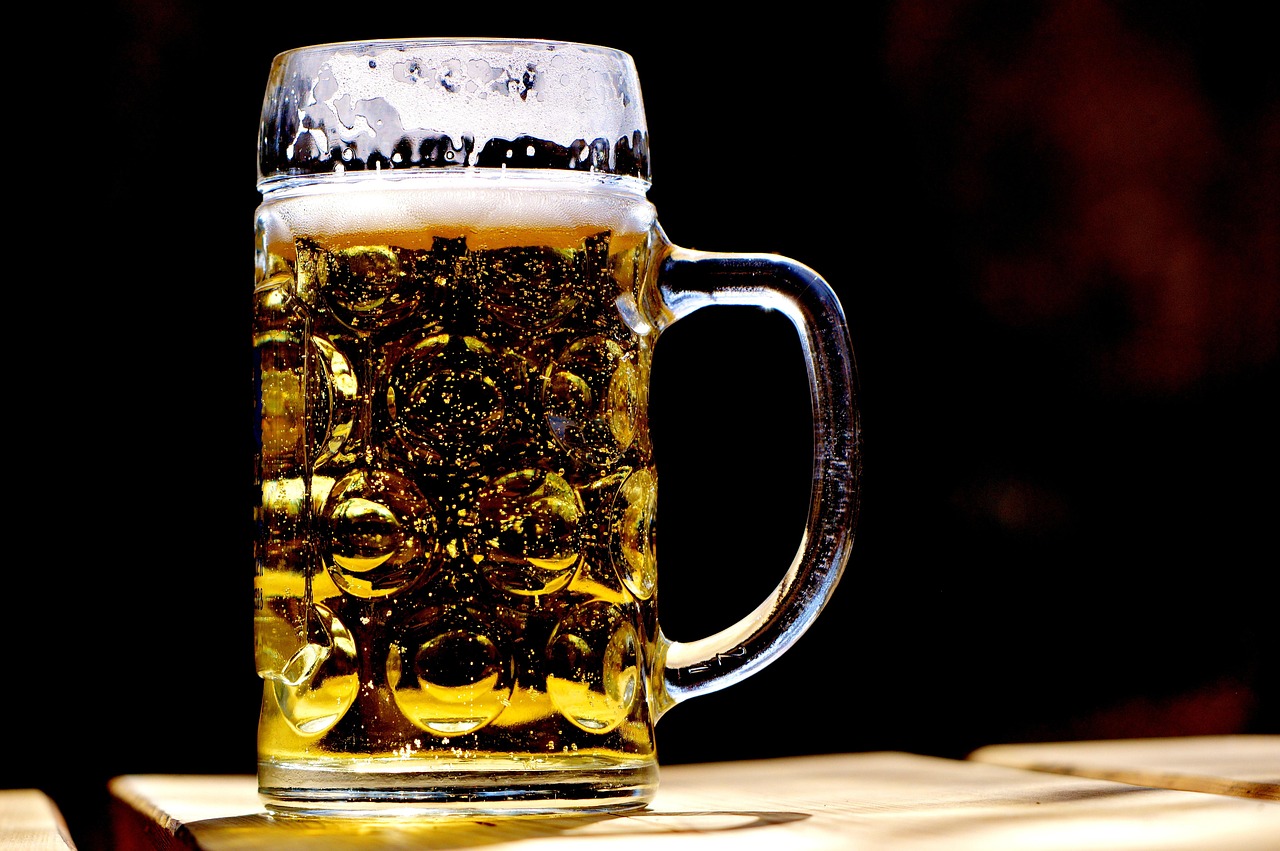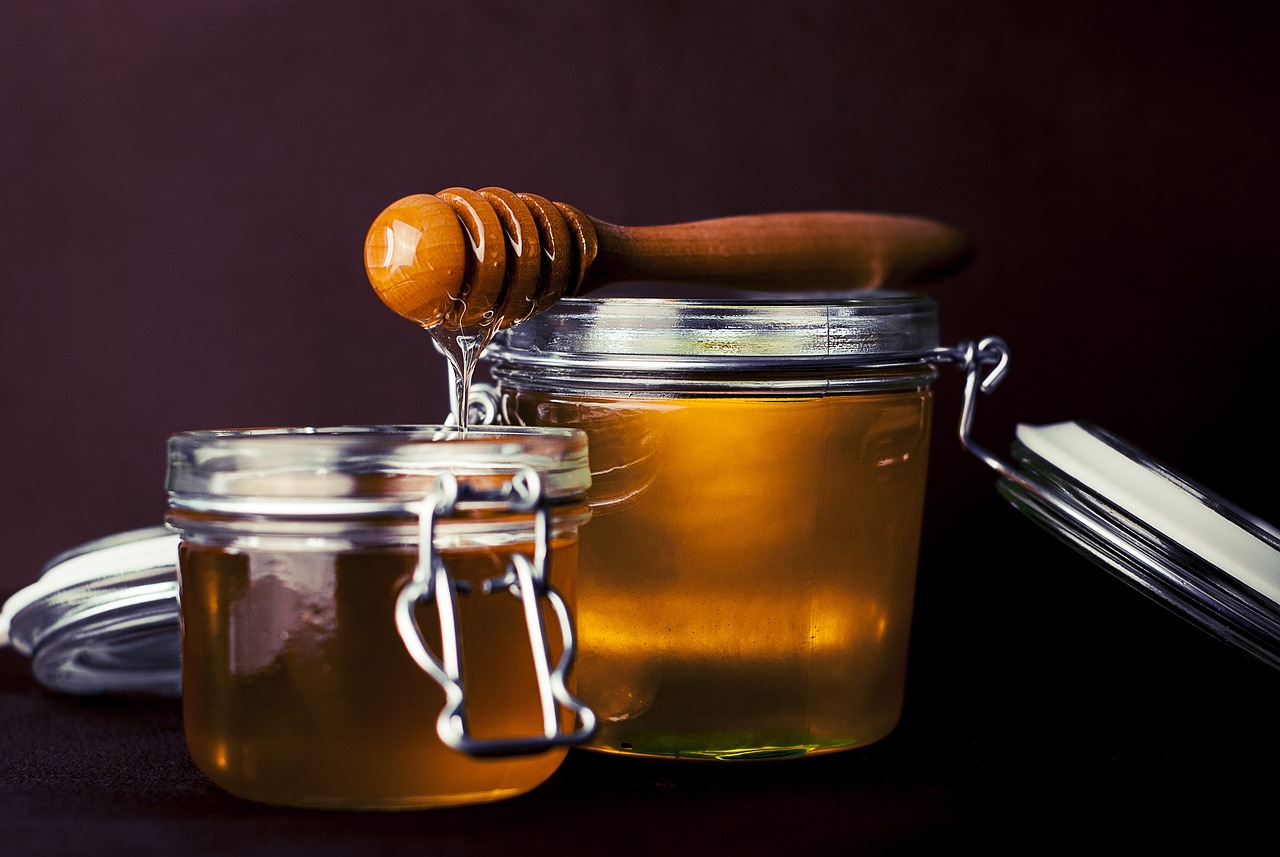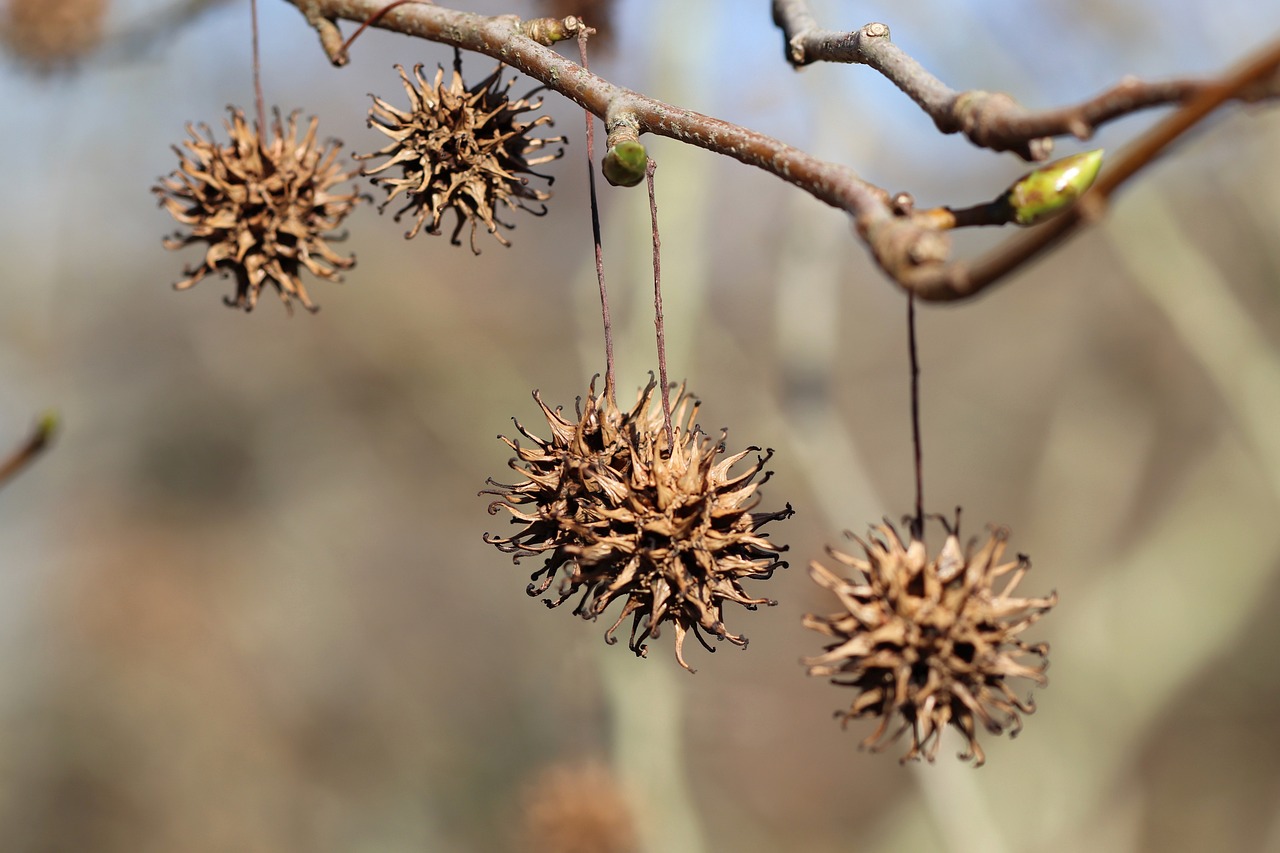The Liquid Amber tree, commonly known as the sweetgum tree, typically grows at a rate of 1 to 2 feet per year. This growth rate contributes to its impressive display of brilliant fall colors, which can range from yellow to red and purple.
Understanding the Liquid Amber Tree
The Liquid Amber tree is a deciduous tree native to North America. It is well-known for its stunning foliage, especially during the autumn months when its leaves transform into vibrant colors. The tree is often planted for its aesthetic appeal, as it can add significant beauty to landscapes and gardens.

Liquid Amber trees thrive in a variety of soil types but prefer well-drained, moist environments. They can grow to be quite large, reaching heights of up to 60 feet and spreading over 40 feet wide. Their unique star-shaped leaves and distinctive spiky seed pods make them easily recognizable throughout the seasons.
Growth Rate Factors
The growth rate of the Liquid Amber tree can be influenced by several factors. Understanding these factors can help gardeners and landscapers achieve the best results when planting this beautiful species.
- Soil Quality: Rich, loamy soil will support faster growth compared to sandy or rocky soils.
- Water Availability: Consistent moisture is crucial for optimal growth. Drought conditions can slow down the growth rate significantly.
- Sunlight: Full sun exposure is ideal for Liquid Amber trees. They generally require at least six hours of direct sunlight each day.
- Climate: These trees prefer temperate climates. Extreme heat or cold can affect their growth and overall health.
- Fertilization: Using a balanced fertilizer can promote quicker growth during the early years of the tree.
Growth Stages
The growth of Liquid Amber trees can be divided into several distinct stages, each characterized by specific developments. Understanding these stages helps in managing their care effectively.

| Growth Stage | Description | Time Frame |
|---|---|---|
| Germination | The seed begins to sprout, developing its first roots and shoots. | 1-3 weeks |
| Seedling | The young tree grows rapidly, establishing its main trunk and branches. | 1-2 years |
| Young Tree | The tree continues to grow in height and width while developing a more complex root system. | 3-5 years |
| Mature Tree | The tree reaches its full height and begins producing flowers and seeds. | 6-10 years and beyond |
During the early years, Liquid Amber trees may experience rapid growth, especially when conditions are favorable. As they mature, their growth rate may slow down but can still add considerable height and width over time. In ideal conditions, these trees can reach their full potential within a decade.
Brilliant Fall Colors
The primary reason many people choose to plant Liquid Amber trees is their spectacular fall colors. As autumn approaches, the leaves turn into shades of yellow, orange, red, and purple. This transformation is due to changes in chlorophyll production as temperatures drop and daylight hours decrease.
The vivid colors not only enhance the beauty of any landscape but also attract wildlife. Birds and other animals are drawn to the seeds produced by the sweetgum tree, adding another layer of life to gardens where these trees are planted.

In summary, understanding the growth rate and care requirements of Liquid Amber trees can help gardeners maximize their potential for beauty, especially during the fall season when they display their brilliant colors.
Planting and Care for Liquid Amber Trees
Successfully growing a Liquid Amber tree requires careful attention to planting and ongoing care. Proper steps taken during planting can lead to a healthier tree, which in turn enhances its growth rate and the vibrancy of its fall colors. Here are some essential guidelines for planting and maintaining Liquid Amber trees.
Choosing the Right Location
Selecting an appropriate site is crucial for the growth of Liquid Amber trees. Consider the following factors when choosing the location:
- Sunlight: Liquid Amber trees thrive in full sunlight. Ensure the chosen spot receives at least six hours of direct sunlight each day.
- Space: These trees can grow large, so select an area with sufficient space away from buildings, power lines, and other trees.
- Soil Type: Well-drained soil is vital. Avoid areas where water tends to pool after heavy rains.
Planting Steps
Once a suitable location has been identified, follow these steps for planting your Liquid Amber tree:

- Prepare the Soil: Test the soil pH. Liquid Amber trees prefer slightly acidic to neutral soil (pH 5.5 to 7.0). Amend the soil as necessary to achieve this balance.
- Dig the Hole: Dig a hole that is two to three times wider than the root ball but no deeper than the root ball itself.
- Add Organic Matter: Mix compost or well-rotted manure into the soil removed from the hole. This will enhance nutrient content.
- Position the Tree: Place the tree in the center of the hole, ensuring that the top of the root ball is level with the surrounding soil.
- Backfill and Water: Fill in around the roots with soil, gently packing it down. Water thoroughly to eliminate air pockets.
- Mulch: Apply a 2-3 inch layer of mulch around the base to retain moisture and suppress weeds.
Watering and Fertilization
Once planted, providing adequate water and nutrients is essential for healthy growth. Here’s how to manage these aspects:
Watering Guidelines
Liquid Amber trees require consistent moisture, especially during their first few years of growth. Follow these watering guidelines:
- Initial Watering: Water deeply right after planting to help establish roots.
- Regular Watering: During dry spells, water the tree every week. Ensure moisture reaches at least 12-18 inches deep.
- Avoid Overwatering: Allow the top 2-3 inches of soil to dry out between waterings to prevent root rot.
Fertilization Tips
Applying fertilizer can support growth, especially in younger trees. Consider these tips:
- Type of Fertilizer: Use a balanced fertilizer with equal parts nitrogen, phosphorus, and potassium (N-P-K).
- Timing: Fertilize in early spring before new growth begins. This timing will encourage strong foliage development.
- Application Rate: Follow package instructions for application rates based on the tree’s age and size.
Pest and Disease Management
Liquid Amber trees are generally resilient but may face challenges from pests and diseases. Being proactive can help mitigate these issues.
Common Pests
Some pests that may affect Liquid Amber trees include:
- Aphids: These small insects can cause leaf curling and yellowing. They can be controlled with insecticidal soap or neem oil.
- Borers: Wood-boring insects can damage branches. Monitor for signs of distress and treat accordingly.
- Spider Mites: These pests thrive in dry conditions. Increasing humidity can help deter them.
Common Diseases
Diseases can also pose a threat. Watch for symptoms of:
- Leaf Spot: This fungal disease causes brown spots on leaves. Improve air circulation and remove affected leaves to prevent spread.
- Cankers: Bark lesions can weaken branches. Prune affected areas immediately to promote healing.
Regular monitoring and early intervention are key in maintaining a healthy Liquid Amber tree. By ensuring proper planting, watering, fertilization, and pest management, you can enjoy the vibrant fall colors these trees have to offer for many years.
Environmental Benefits of Liquid Amber Trees
In addition to their stunning fall colors, Liquid Amber trees offer numerous environmental benefits. Understanding these advantages can help justify their planting in urban and suburban landscapes. These trees contribute positively to the environment in several ways.
Air Quality Improvement
Liquid Amber trees play a significant role in improving air quality. They absorb carbon dioxide and release oxygen through photosynthesis, which is essential for maintaining a healthy atmosphere. Here are some key points:
- Carbon Sequestration: Trees capture and store carbon dioxide, helping to mitigate climate change.
- Pollen and Dust Reduction: The leaves and branches of Liquid Amber trees can trap dust and pollen, leading to cleaner air.
Habitat for Wildlife
These trees provide essential habitats for various wildlife species. Birds, insects, and other animals benefit from the presence of Liquid Amber trees:
- Birds: The tree’s spiky seed pods attract birds such as finches and woodpeckers, offering food sources.
- Insects: Liquid Amber trees support diverse insect populations, which are vital for pollination.
- Mammals: Small mammals may use the tree for shelter and nesting materials.
Landscaping Uses
Liquid Amber trees are popular choices for landscaping due to their aesthetic appeal and adaptability. They can enhance any garden or urban area. Here are some common landscaping uses:
Shade Trees
Due to their large canopy, Liquid Amber trees provide ample shade, making them ideal for parks and residential areas.
- Cooling Effect: Shade from these trees can reduce the temperature of surrounding areas, creating a more comfortable environment.
- Energy Savings: Well-placed trees can lower energy costs by shading homes and reducing air conditioning needs.
Ornamental Features
The striking appearance of Liquid Amber trees makes them an excellent choice for ornamental plantings.
- Seasonal Interest: Their vibrant fall foliage adds color and beauty to landscapes throughout the changing seasons.
- Unique Structure: The tree’s star-shaped leaves and distinctive bark provide visual interest year-round.
Common Varieties of Liquid Amber Trees
While the common Liquid Amber tree is widely known, there are several varieties that gardeners can consider. Each variety has its unique characteristics:
| Variety Name | Description | Height |
|---|---|---|
| Liquidambar styraciflua | The most common variety, known for its vibrant fall colors ranging from yellow to deep red. | 60-75 feet |
| Liquidambar styraciflua ‘Rotundiloba’ | A cultivar with rounded leaves that provide a unique look compared to traditional varieties. | 40-50 feet |
| Liquidambar styraciflua ‘Slender Silhouette’ | This variety has a narrow growth habit, making it suitable for smaller gardens or tight spaces. | 40-50 feet |
Cultural Significance
The Liquid Amber tree holds cultural importance in various regions. Its wood has been used traditionally in furniture making and crafts due to its durability and attractive grain. Additionally, the tree is often celebrated in art and literature for its beauty and elegance.
In some communities, Liquid Amber trees are planted to commemorate special events or honor individuals. Their longevity and stunning seasonal changes make them a lasting tribute.
Educational Opportunities
Liquid Amber trees also provide educational opportunities for schools and communities. They can be used to teach important lessons about:
- Ecosystems: Understanding how trees interact with their environment can enhance knowledge about ecosystems.
- Botany: Studying the growth patterns and lifecycle of Liquid Amber trees can be an engaging way to learn about plant biology.
By incorporating Liquid Amber trees into various aspects of life, we can appreciate not only their beauty but also their numerous contributions to our environment and society.
Challenges and Considerations
While Liquid Amber trees are renowned for their beauty and environmental benefits, they do come with certain challenges and considerations for potential growers. Being aware of these factors can help ensure successful cultivation and management.
Allergenic Potential
One aspect to consider is the allergenic nature of Liquid Amber trees. The pollen produced by these trees can trigger allergic reactions in sensitive individuals. It is essential to evaluate the local population’s sensitivity to pollen when deciding to plant these trees in residential areas.
- Symptoms: Common symptoms include sneezing, nasal congestion, and itchy eyes. Individuals with allergies may want to take precautions during peak pollen seasons.
- Alternative Options: Consider other non-allergenic tree species if allergies are a concern in your community.
Maintenance Requirements
Liquid Amber trees require regular maintenance to thrive and maintain their aesthetic appeal:
- Pruning: Regular pruning helps shape the tree and remove any dead or diseased branches. This encourages healthy growth and improves air circulation.
- Leaf Drop: In fall, the trees shed their leaves, creating a cleanup task for homeowners. Keeping the area tidy can prevent pests and diseases.
Potential Invasive Nature
Some regions may classify Liquid Amber trees as invasive due to their ability to spread quickly and adapt to various environments. Here are some points to keep in mind:
- Seed Dispersal: The spiky seed pods can easily disperse seeds, leading to unwanted saplings in nearby areas.
- Management Strategies: Regular monitoring and removal of seedlings can help manage their spread effectively.
Community Involvement and Education
The role of community involvement cannot be understated when it comes to planting and caring for Liquid Amber trees. Engaging local residents in educational programs can promote awareness about the benefits and responsibilities of tree planting. Here are some ideas for fostering community involvement:
- Tree Planting Events: Organize events where community members can come together to plant Liquid Amber trees in parks or public spaces.
- Workshops: Offer workshops on tree care, maintenance, and the ecological benefits of planting trees in urban areas.
- School Programs: Collaborate with local schools to incorporate tree planting into science curricula, allowing students to learn about botany, ecology, and environmental stewardship.
Final Thoughts
The Liquid Amber tree is a remarkable species that offers a wealth of benefits, from its stunning fall colors to its positive impact on the environment. Understanding its growth rate and care requirements is essential for anyone considering adding this magnificent tree to their landscape.
As we have explored, the Liquid Amber tree not only enhances the beauty of our surroundings but also plays a vital role in improving air quality, providing habitats for wildlife, and enriching our ecosystems. Despite some challenges, such as its allergenic potential and maintenance requirements, the rewards of planting a Liquid Amber tree far outweigh the drawbacks.
By fostering community involvement and education around the importance of trees, we can ensure future generations appreciate the ecological benefits these magnificent trees provide. Whether planted in residential gardens or public spaces, Liquid Amber trees will continue to captivate with their brilliant colors and contribute positively to our environment for years to come.
